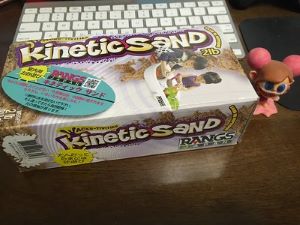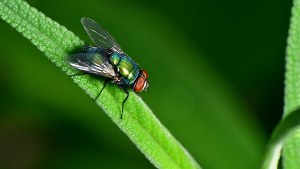
Oh no, did the dog just eat Johnny’s kinetic sand?
You left your child to play with his kinetic sand while you go to the kitchen to prepare lunch. All of a sudden you hear your child laughing, so you look over to see that the dog is eating the sand right out of little Johnny’s hand.
For a minute you think it’s cute and smile at the both of them. Then you realize that the kinetic sand might not be very good for the dog.
If you have been in a situation like this, or you are going through one right now.
Take a look at the useful information this article will provide to get you through this doggy dog situation.
Let’s take a look at the first question, It’s a common one in this kind of situation.
What is kinetic sand?
Kinetic sand is altered sand that has been modified for a child’s best interest. The bright colors and wet texture is appealing to a child’s sensory development. When the child interacts with the sand it can also help with physical development such as their motor skills. Kinetic sand is made up of fine sand, and dimethicone. Did you know that dimethicone is a type of silicone that is used in most beauty products?
How does it work? Kinetic sand means “togetherness from movement and energy”.
The sand sticks together when pressure is applied. If it dries out, all you need to do is add a couple of drops of water to reactivate it.
How is kinetic sand different from normal sand?
Kinetic sand is regular sand however, it has been coated with a silicone substance to make it feel wet. Much like regular wet beach sand. Kinetic sand is much softer than regular sand as you can imagine, it has a silicone coating that is soft and smooth. In fact, you can make your own kinetic sand from regular sand at home, but we will get into that later on in this article.
So, kinetic sand is regular sand but it’s just been modified by adding a silicone substance coating around it. This would protect the sand and make it more durable when a child plays with it.
What ingredients or chemicals does it contain?
Kinetic sand contains fine grounded up sand, silicone, and is coated in either silicone oil or olive oil. The type of silicone that’s used is called dimethicone also known as PDMS. Dimethicone is an organic silicon-based polymer which is used for many different products. One of those products is skin primers. The Dimethicone in the primer helps make a protective layer on the skin and seals in moisture PDMS is also found in lubricants and conditioners.
Did you know, despite popular belief, silicone’s are considered a type of plastic because they’re from the rubber family. While plastics have polymer, carbon, and hydrogen components, silicons have silicon, oxygen, and hydrocarbon components.
Which ingredients are toxic or poisonous?
Kinetic sand has a variety of products to suit its customers. These include vanilla cupcake flavor, cherry fizz flavor, chocolate swirl, sour apple, beach sand, and zen garden sand. All of these types of kinetic sands are non-toxic however, digesting kinetic sand can be harmful if consumed in large amounts. This is why kinetic sand is not recommended for children under 18 months.
There is also a DIY kinetic sand you can make right at home with simple ingredients. We will talk more about that later in this article.
Is it dangerous for your dog to eat kinetic sand?
Because the sand has silicon in it, if a dog were to consume the sand it could sit in their stomach for long periods of time before it passes, or it could get stuck in their intestines. A small amount normally passes through their system with no issues. In some cases where a dog has eaten a large amount of kinetic sand, surgery to remove the sand might have to take place.
If your dog has consumed kinetic sand, try to gauge the amount they have eaten. Normal the container that the sand comes in will tell you how much sand you started with. Then you can see the difference of what’s left compared to the container amount to gauge the difference.
What should you do if your dog eats kinetic sand?
The first thing to do is try to gauge how much your dog has eaten, as we discussed in the last section. This way when you call your vet you will know how much to tell them. Your vet will be able to tell you based on your dog’s weight, the risk. Depending on the amount of time that has past your vet might instruct you to induce vomiting. Never do this at home without a vet’s consent. If too much time has passed since your dog has eaten the sand, and it’s already in their intestines, then the vet may ask you to bring your dog in for x-rays.
If your dog has eaten kinetic sand and you’re not sure how much they have consumed or you don’t think it was a large amount, after calling your vet, look out for signs and symptoms like vomiting, watery stool, abdominal pain, constipation, lethargia, loss of appetite, dehydration.
Is DIY kinetic sand safer?
There are different ways you can make DYI kinetic sand. One of the ways is with sand, cornstarch, and oil. These ingredients are harmless to a dog, they are even present in dog food. On the other hand, you can make DYI with the same ingredients but they include dish soap for a nice scent. Dish soap can be toxic for a dog. It has an ingredient in it called sodium hydroxide also known as ‘lye’. Hydroxides have a high alkaline content which can burn a dog’s mouth, esophagus, and stomach when ingested in a large quantity.
Another type of DYI kinetic sand is formulated with silicon oil. Any kind of oil when ingested can cause an upset tummy or worse for your dog. Also, silicon does not absorb into the body and is said to block blood vessels.
Is play dough any safer than kinetic sand?
Play dough is made up of flour, food coloring, salt, oil, and water. Play dough can also be toxic for dogs. The amount of [salt in play dough] can cause [salt posioning] in dogs. Salt poisoning can cause kidney failure, coma, and in the worst cases death. Neither kinetic sand nor play dough is safe for your dog to eat in large amounts. Remember a large amount can vary depending on the size of your dog.
If your dog has eaten play dough, call your vet right away, and look out for signs and symptoms like Vomiting, diahrrea, water retention, seizure, increased thirst, tremors.
Based on the above evidence, kinetic sand is not safe for your dog to eat, especially if they eat a large amount. In the event that this happens call your vet immediately, then keep a close eye on your dog for symptoms. These kinds of situations happen however, the best way to prevent these things from happening is to secure your child’s kinetic sand somewhere the dog cannot get to it. Also, when your child is playing with the sand make sure they’re enclosed in an area the dog can not get to or secure the dog somewhere it can not get close to the kinetic sand.
In an event where your child is playing with something that could be toxic for your dog. Keep your dog and child securely separated for that time. You could save your dog’s life, or at the very least prevent an expensive trip to the vet. Also, If this kind of event takes place stay calm and follow the steps provided in this article.
Photo Credits
¹ Photo by bm.iphone on Flickr




